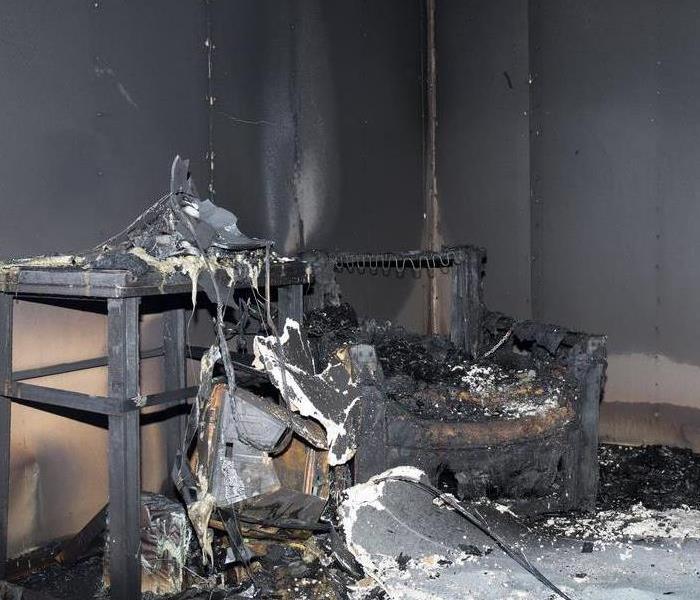What are Soot Tags?
1/27/2023 (Permalink)
When a home is damaged by fire or smoke, the resulting damage can be extensive. Soot tags are one type of residual damage that can occur after a fire or smoke event. A soot tag is a visible line of soot that is deposited on surfaces within the structure during the course of these events. The pattern created by these deposits resembles spider webs or cobwebs in many cases, hence their nickname "soot webs."
The appearance of soot tags does not necessarily mean there was inadequate ventilation during an event, it simply means that certain conditions were present at some point after the initial fire happened.
Smoke is attracted to and will stick to cold surfaces.
So, what are soot tags? Soot is a by-product of the smoke sticking to cold surfaces. Smoke particles are attracted to and will stick to cold surfaces, which causes soot deposits on those surfaces. These soot deposits can be seen in the form of black spots or streaks on ceilings and walls after a fire has been put out in your home or office building.
Soot tags may look like ash but they're not quite as fine-grained as ash. It's more like carbon dust left behind by burning wood or coal (or even candles).
“cast off” tiny particles
Soot is a by-product of combustion, which occurs when material is burned. Soot is composed of carbon particles that are black or gray in color and often resemble dust or ash. It can be found on the walls, ceiling, and other surfaces of your home if you've had exposure to smoke from fires or candles.
web-like pattern of soot on the surface.
Soot tags are a specific pattern of soot that is created by smoke and not by fire. They can be found on the surfaces of buildings, but they are not the same as soot stains.
Soot tags are typically circular or rectangular in shape, with a web-like appearance similar to cobwebs. They're caused by heat and moisture coming into contact with flammable material (such as paint), which causes the material to burn off in a controlled way rather than burn completely up into ash. Because this happens on the surface of walls or ceilings, it leaves behind its own unique mark on your home's interior decorating scheme!
Ceiling Tiles or Wall Cavities
So, what exactly is a soot tag? Soot tags are confined to areas above ceiling tiles or within wall cavities that have not been compromised by other means, such as water damage.
Soot tags can also appear on exterior surfaces of buildings as well as inside living spaces where there has been fire damage or improper ventilation during construction activities involving materials like drywall and insulation boards.
Soot tags are more likely to occur in rooms that are more closed off from outside air, which allows smoke to linger longer. Soot tags are not a sign of fire damage or water damage. They are also not a sign of mold damage.
Soot tags are a type of smoke damage that can occur in homes, but they are relatively rare. If you have any concerns about the condition of your home after a fire, contact an expert for help. Give SERVPRO of East Round Rock a call if your property suffers from a fire damage.


 24/7 Emergency Service
24/7 Emergency Service
